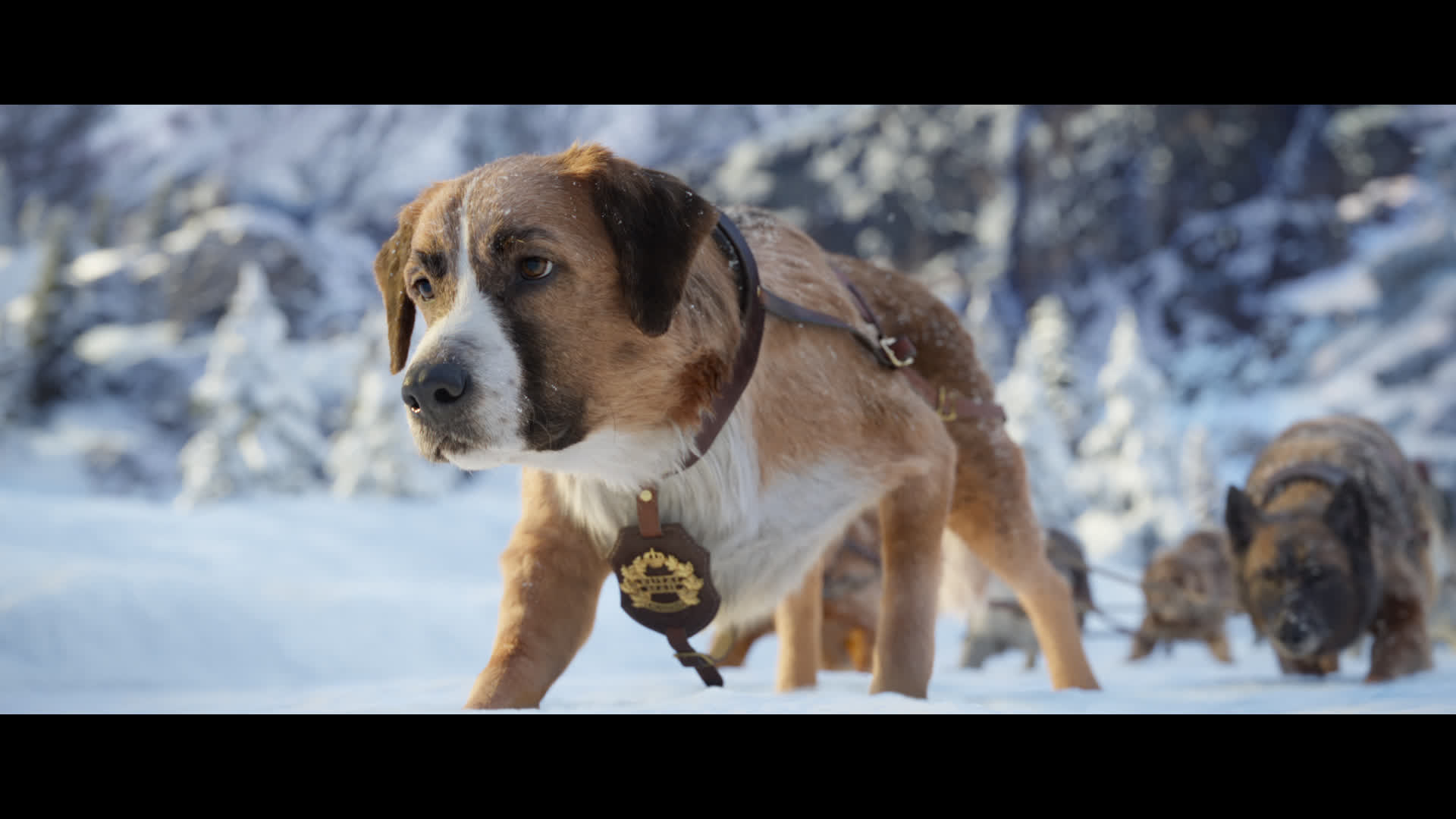Um cão de trenó luta para sobreviver na selva de Yukon.Um cão de trenó luta para sobreviver na selva de Yukon.Um cão de trenó luta para sobreviver na selva de Yukon.
- Prêmios
- 1 vitória e 8 indicações no total
- Direção
- Roteiristas
- Elenco e equipe completos
- Produção, bilheteria e muito mais no IMDbPro
Enredo
Você sabia?
- CuriosidadesEach sled dog on Buck's team (besides Spitz) was given the personality of one of the dwarfs from the Disney classic Branca de Neve e os Sete Anões (1937): Dolly is Bashful, Pike is Grumpy, Joe is Happy, Billy is Sleepy, Dave is Dopey, Dub is Sneezy, and Sol-Leks is Doc.
- Erros de gravaçãoThe message on the telegram that Perrault receives has a uniformity and cleanness that demonstrates that this was produced not on a typewriter, but by a modern laser printer. Also, the telegram's text uses a modern Courier font not present on typewriters of that period.
- Citações
[last lines]
John Thornton: [narrates] Some say that's the legend. Not so. You see, I knew him once, when he was just a dog at a men side. And even all this land is his, every summer, when he comes down to the valley, he remembers kind hands and old masters... before he went to his own... became his own master... before he heard the call.
- Cenas durante ou pós-créditosFilm title at the end of closing credits
- Versões alternativasPrior to re-shoots, Mercedes, Charles, and the remaining dog team die (off-screen) on the broken-up river; only Hal survives to return to Dawson and confront John Thornton in the Argonaut saloon. (Paraphrased: "I lost everything because of you: my dogs... my sister...") Despite successful test screenings, studio heads changed this to Hal saying, "My dogs ran off" -- indicating the team and (one assumes) Mercedes and Charles survived -- in an attempt to keep children from being upset.
- Trilhas sonorasJohnny Todd
Traditional
Avaliação em destaque
I am not sure how the story in the book goes, but the movie was great! It had adventure, beautiful scenery, laughter, and sadness. The entire film flowed well, it had intensity and kept your thoughts wanting to discover what happened next.
- 0U
- 27 de mar. de 2020
- Link permanente
Principais escolhas
Faça login para avaliar e ver a lista de recomendações personalizadas
- How long is The Call of the Wild?Fornecido pela Alexa
Detalhes
- Data de lançamento
- Países de origem
- Centrais de atendimento oficiais
- Idiomas
- Também conhecido como
- El llamado salvaje
- Locações de filme
- Yukon, Canadá(Klondike Gold Rush)
- Empresas de produção
- Consulte mais créditos da empresa na IMDbPro
Bilheteria
- Orçamento
- US$ 135.000.000 (estimativa)
- Faturamento bruto nos EUA e Canadá
- US$ 62.342.368
- Fim de semana de estreia nos EUA e Canadá
- US$ 24.791.624
- 23 de fev. de 2020
- Faturamento bruto mundial
- US$ 111.166.669
- Tempo de duração1 hora 40 minutos
- Cor
- Mixagem de som
- Proporção
- 2.39 : 1
Contribua para esta página
Sugerir uma alteração ou adicionar conteúdo ausente












































